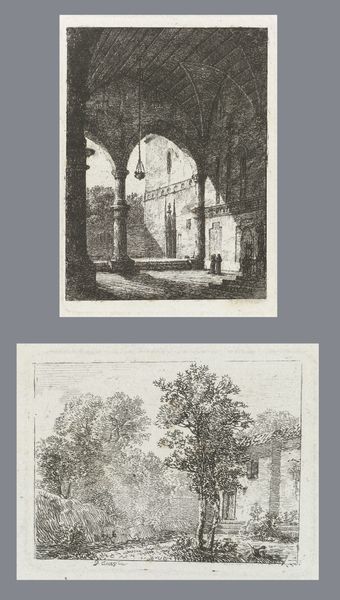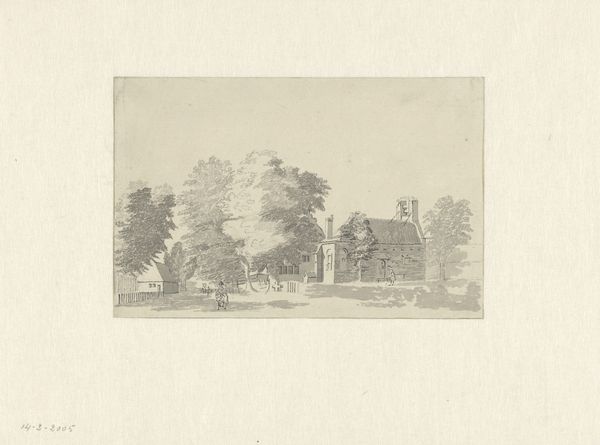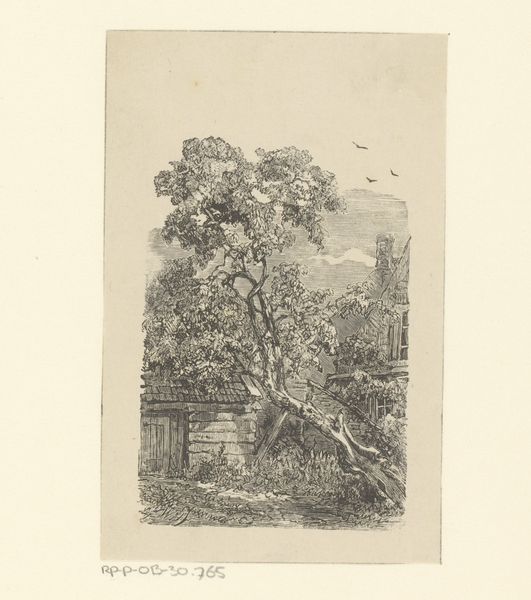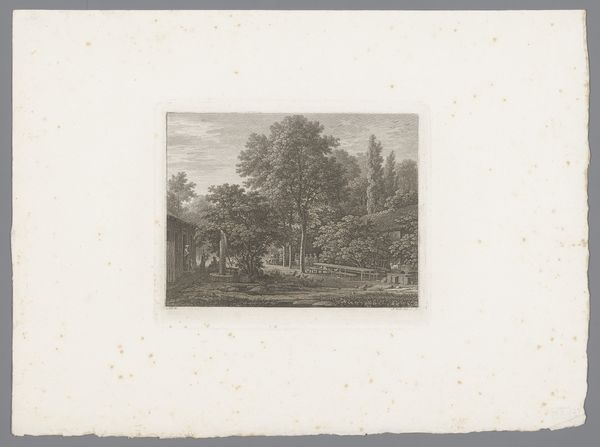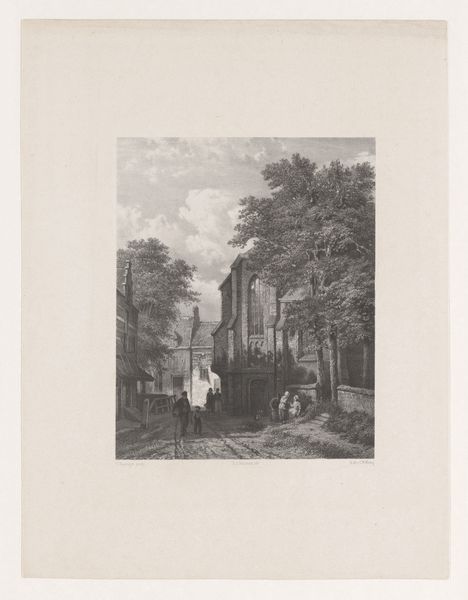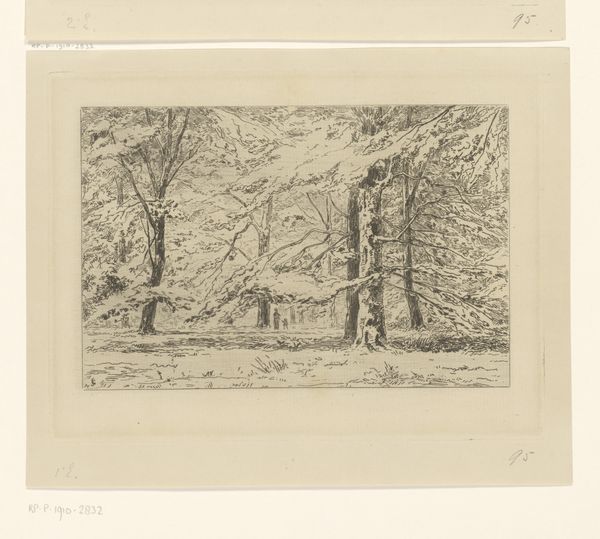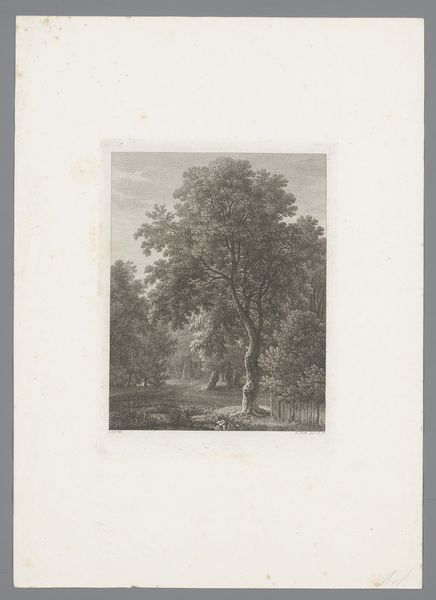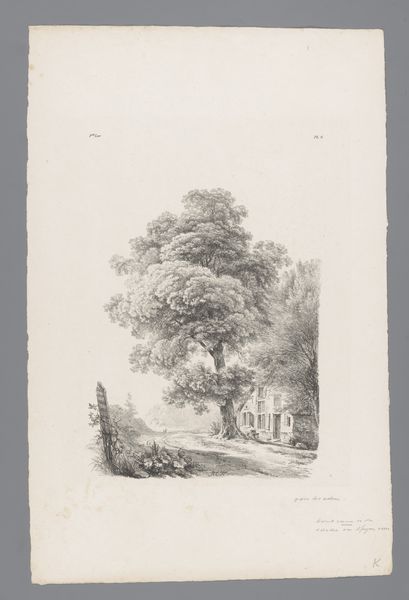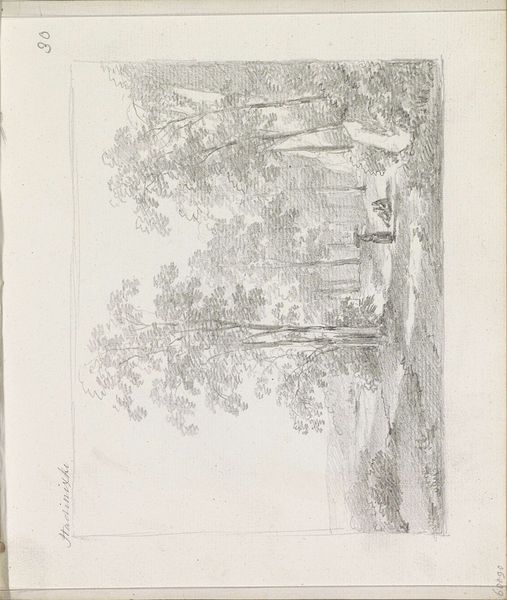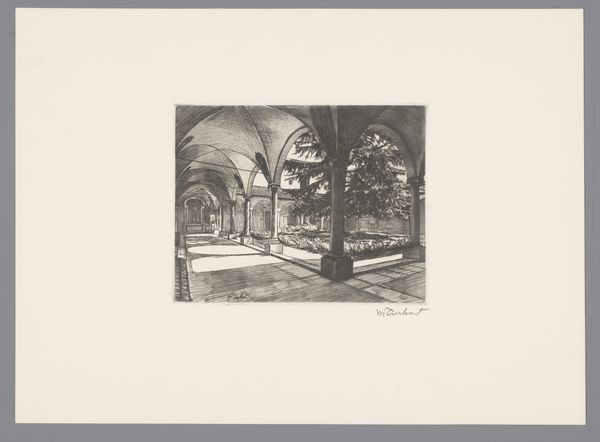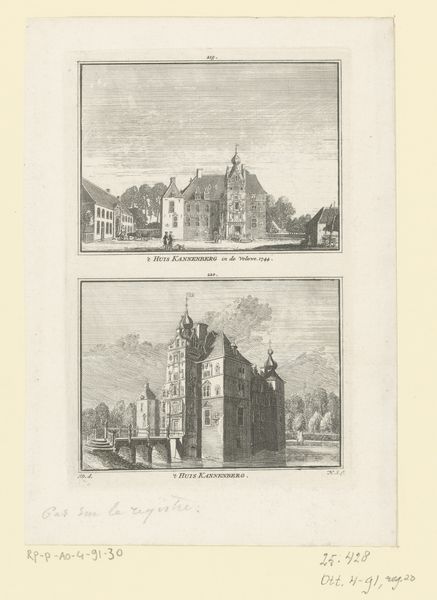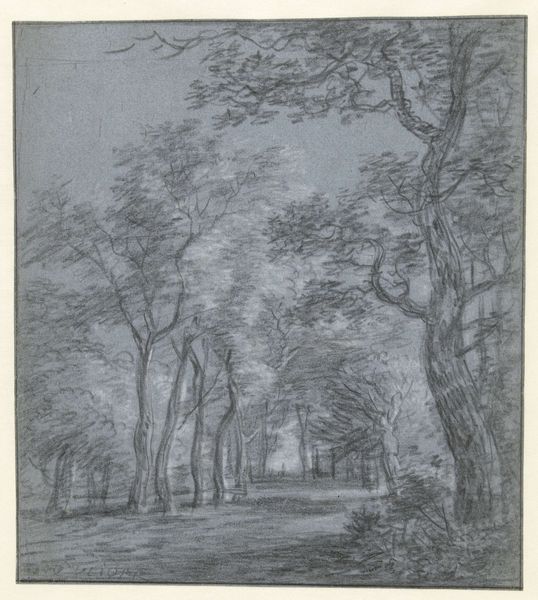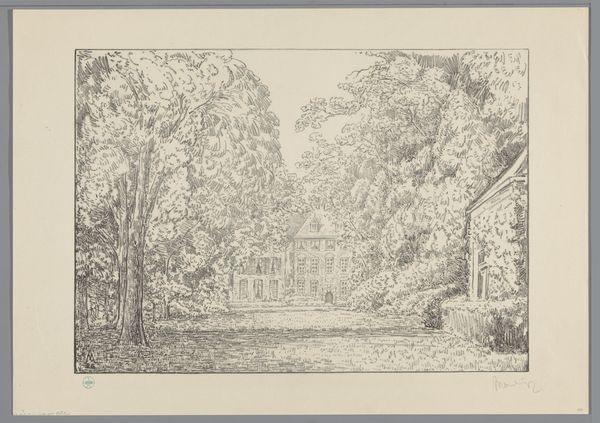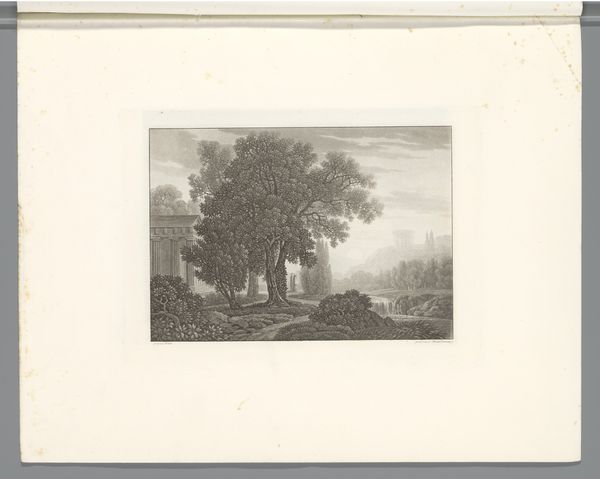
Landschap met een gotisch gebouw en voorstelling van een heuvellandschap met een huis 1804 - 1821
0:00
0:00
drawing, print, etching
#
drawing
# print
#
etching
#
landscape
#
forest
#
romanticism
#
genre-painting
Dimensions: height 102 mm, width 116 mm, height 118 mm, width 69 mm
Copyright: Rijks Museum: Open Domain
Editor: We're looking at "Landscape with a Gothic Building and Depiction of a Hilly Landscape with a House," an etching by Domenico Quaglio, created sometime between 1804 and 1821. There is an interesting duality within the piece: two contrasting yet harmonious landscapes in one frame. I find it really captivating! What do you see when you examine this artwork? Curator: Initially, I am struck by the rigorous execution of the etched lines. Notice how the artist uses hatching and cross-hatching to delineate form and texture, particularly in the foliage of the trees and the stonework of the gothic building. The stark contrast between light and shadow serves to enhance the pictorial depth, wouldn't you agree? Editor: Yes, the dramatic light really pops! The trees appear voluminous and substantial due to the shadows. What else can you observe? Curator: Observe how Quaglio employed varying densities of line to suggest atmospheric perspective, notably in the upper scene. The ethereal quality he achieved softens the rigidity often found in architectural renderings. Also, note the geometric volumes juxtaposed in nature, which are structured with precision, creating a rhythmic harmony across the two panels. Editor: That is a very interesting point about rhythm. Considering that the drawing employs this duality through geometry, do you think it brings in principles of Romanticism? Curator: Precisely. Though Quaglio renders objective reality with scientific precision, the overall impact aligns more with Romantic sensibilities. By isolating this kind of structure, Quaglio reveals both its material construction and its sublime form, thus blending structure with expressive emotional content. Editor: This new approach has definitely deepened my perspective on this artwork! Curator: Indeed. By examining formal elements in their intricate connection with emotional and theoretical intentions, we may come closer to the quintessence of art itself.
Comments
No comments
Be the first to comment and join the conversation on the ultimate creative platform.
